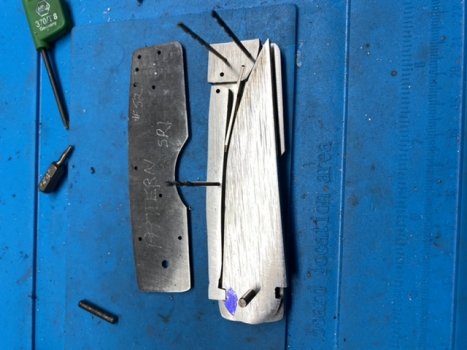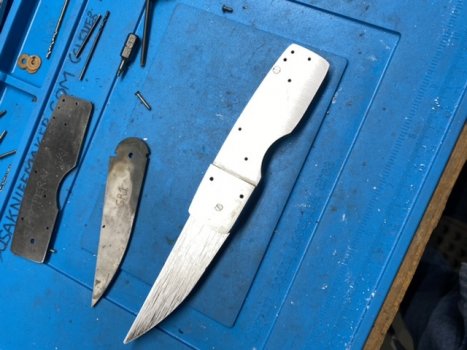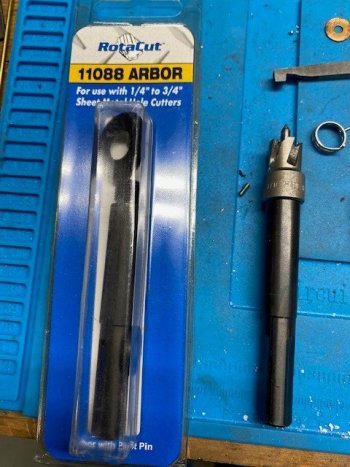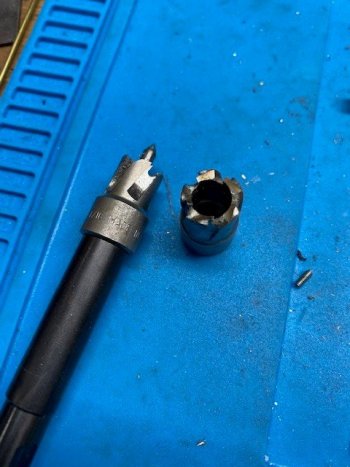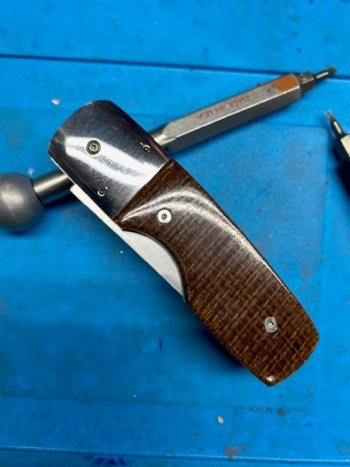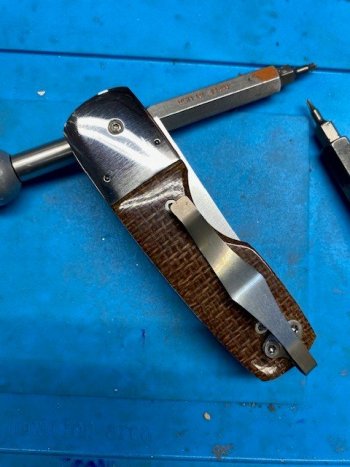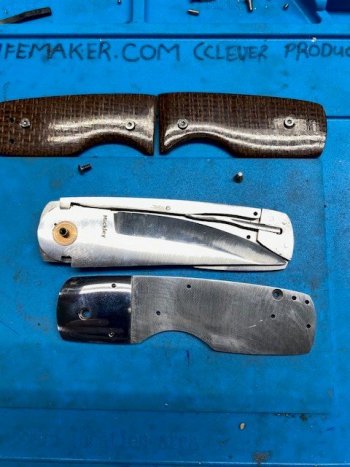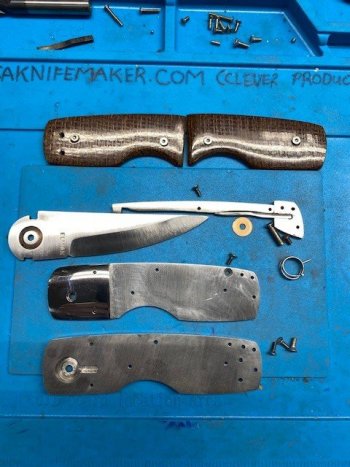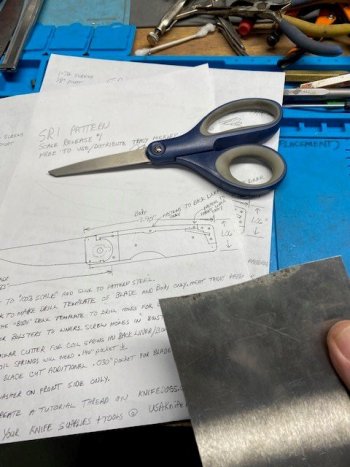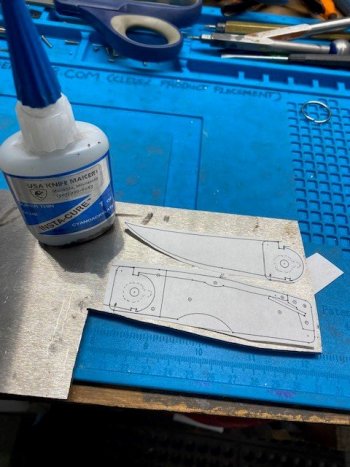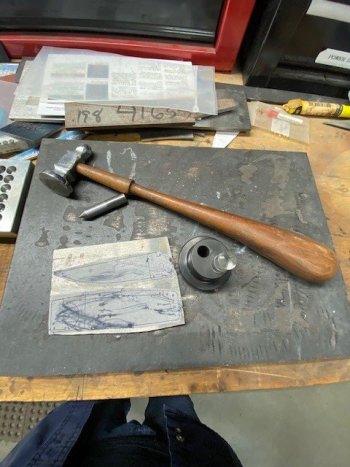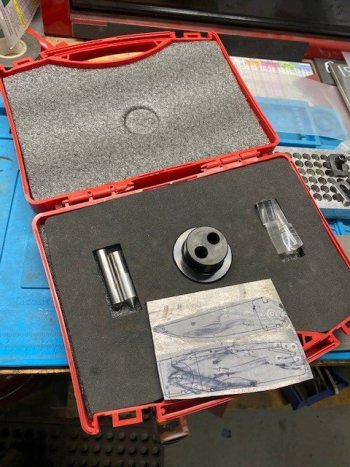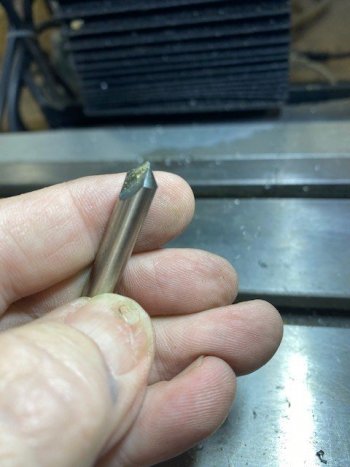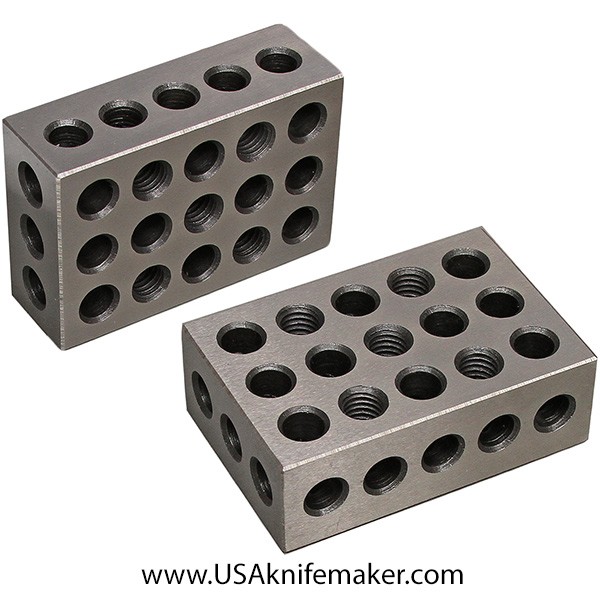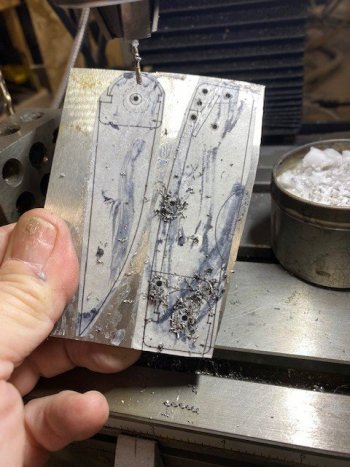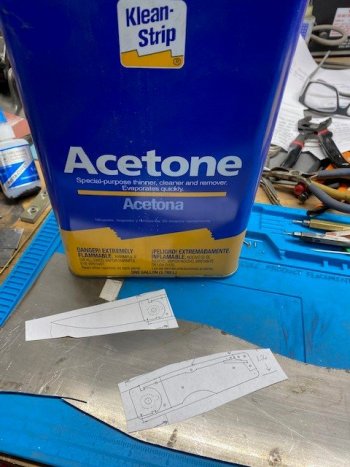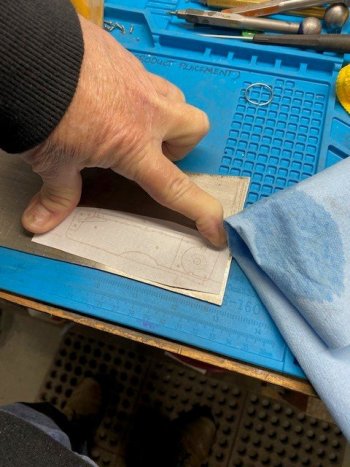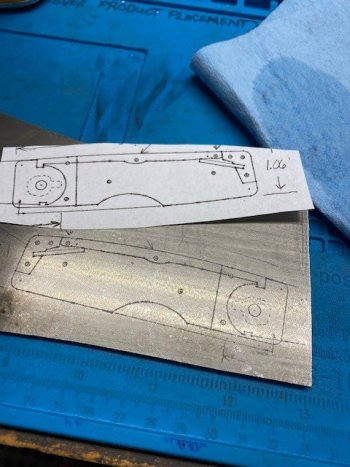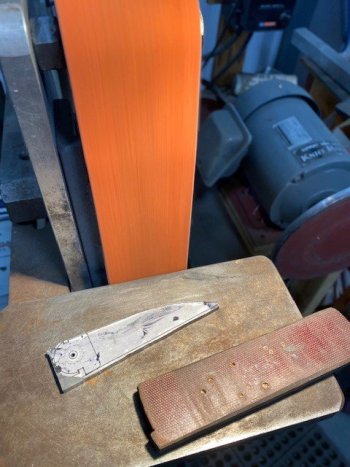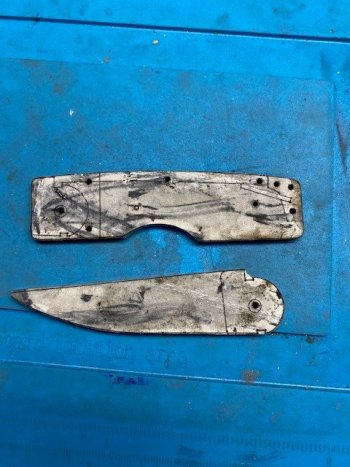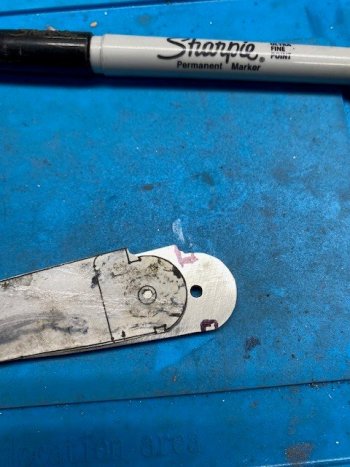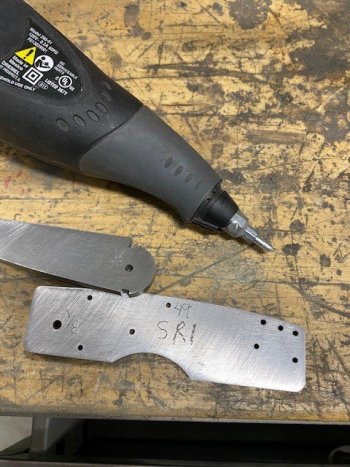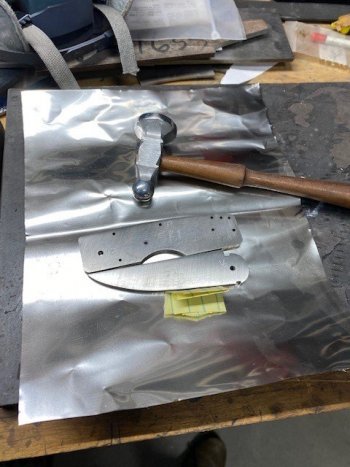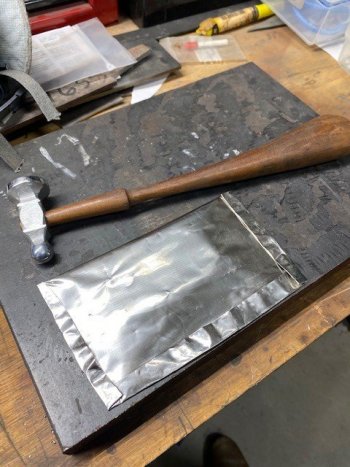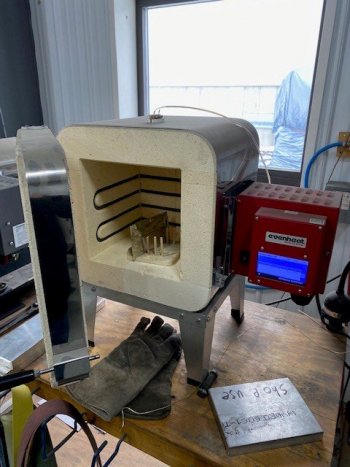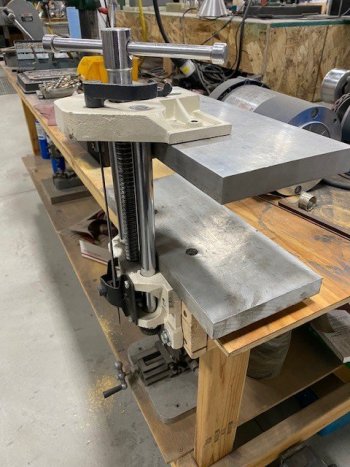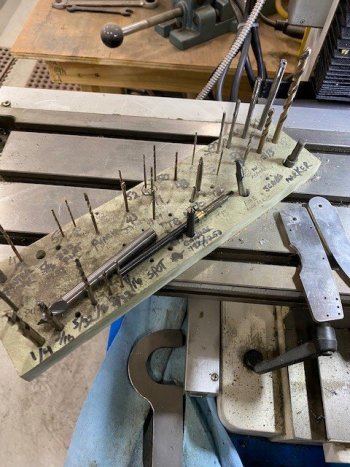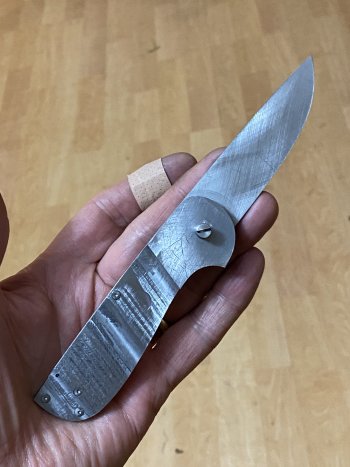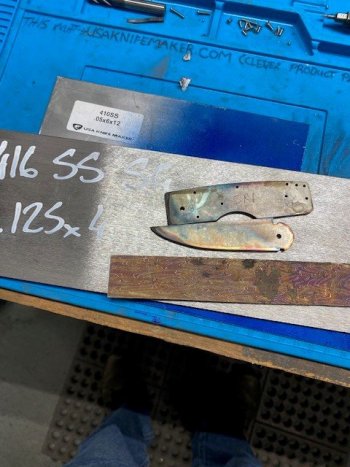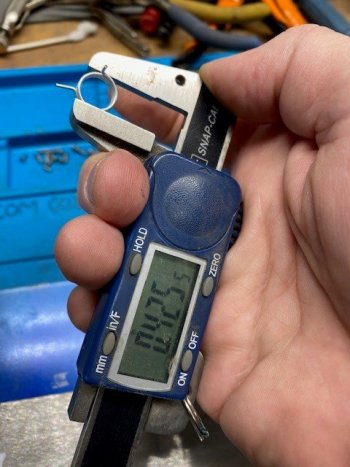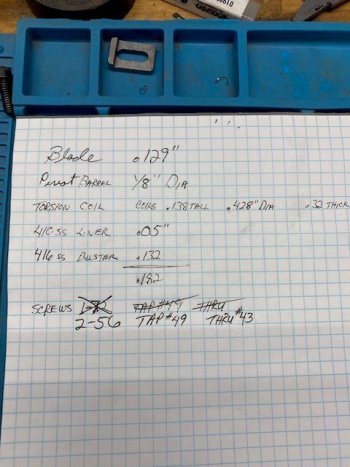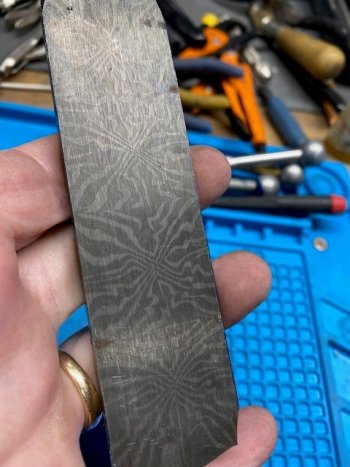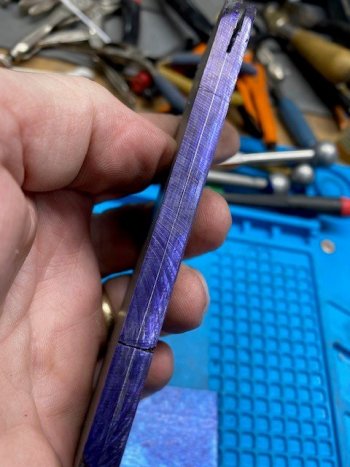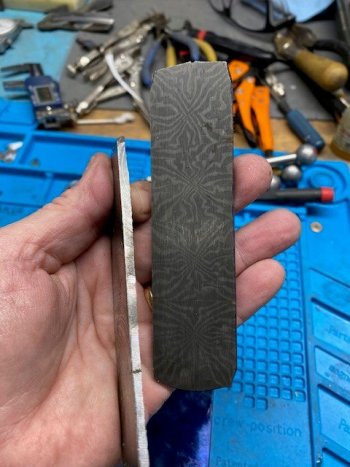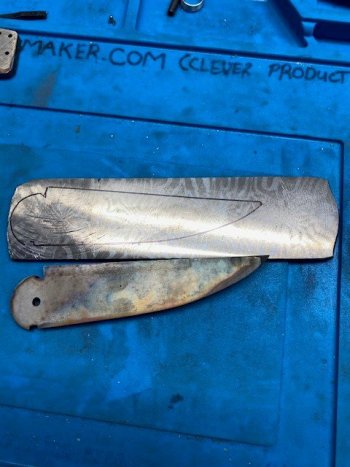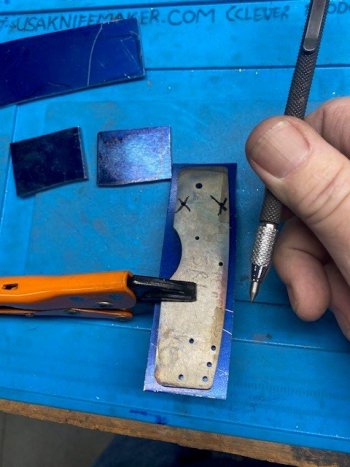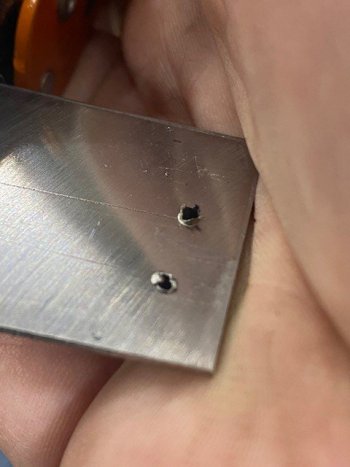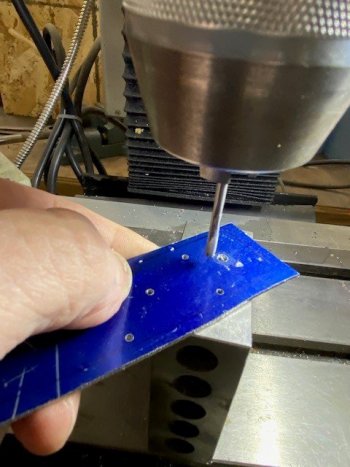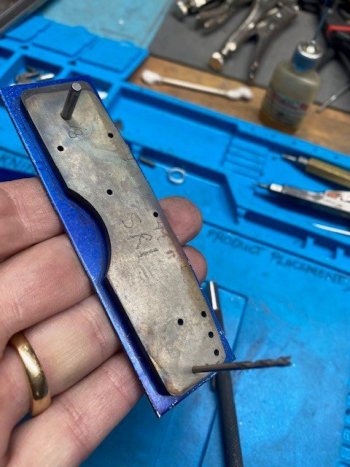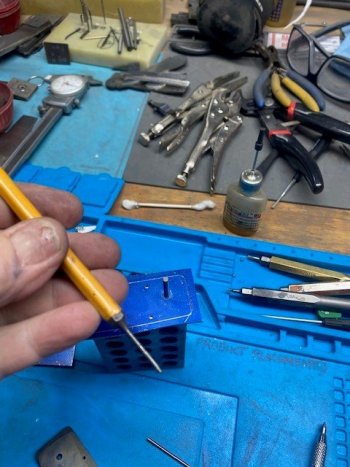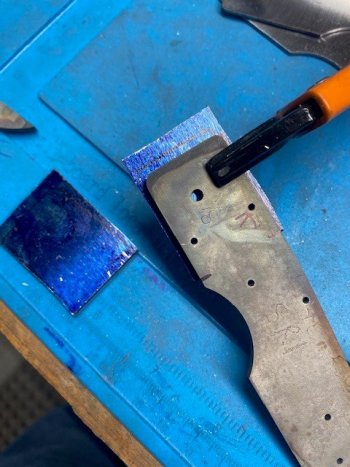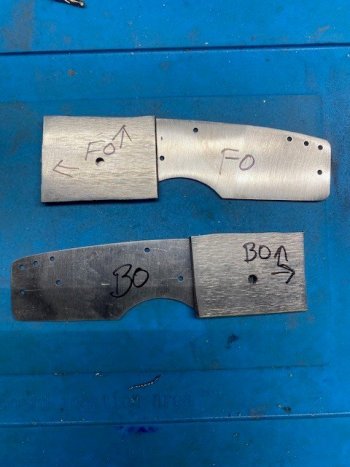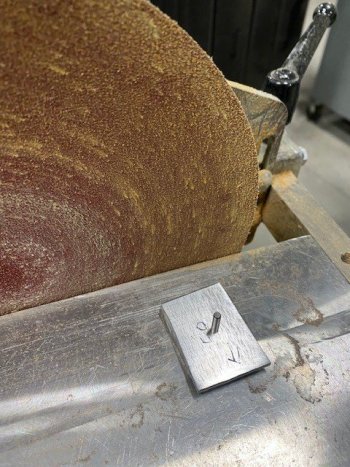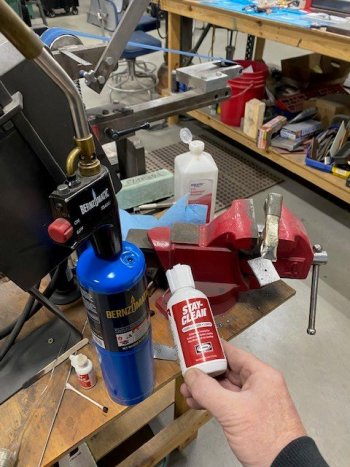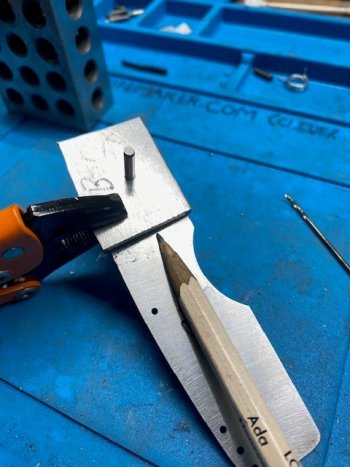This post is a Placeholder for an eventual tutorial on building a scale release auto using the SR1 pattern I have released for free use.
The pattern is attached here as a file.
It will take at least a few weeks to fill in this thread. Hang in there.
In a very simple description, these are lock back knives with a coil spring on the blade. The front liner pivots on the main blade pivot and is fastened to the back of the lock bar. The back liner is fastened to the lock bar as the pivot point. The screws holding the lock bar pivot and the back of the lock bar attach only to one liner. This allows the front scale to pivot (slightly) on the blade pivot.
The lock bar spring holds it all in place as the lock bar engages the blade in the open or closed position.
Here is a list of tools and parts we will be using. This list will be added to as we progress through the build:
Rotabroach
https://usaknifemaker.com/catalogsearch/result/?q=rotab
(These parts below are NOT used in this build but are used for traditional button release autos. I am including these here in case you are have an interest in building other types of autos.
Buttons
https://usaknifemaker.com/catalogsearch/result/?q=pp-03
Springs
https://usaknifemaker.com/compression-spring-181-x-313-x-020.html
https://usaknifemaker.com/torsion-spring.html )
The pattern is attached here as a file.
It will take at least a few weeks to fill in this thread. Hang in there.
In a very simple description, these are lock back knives with a coil spring on the blade. The front liner pivots on the main blade pivot and is fastened to the back of the lock bar. The back liner is fastened to the lock bar as the pivot point. The screws holding the lock bar pivot and the back of the lock bar attach only to one liner. This allows the front scale to pivot (slightly) on the blade pivot.
The lock bar spring holds it all in place as the lock bar engages the blade in the open or closed position.
Here is a list of tools and parts we will be using. This list will be added to as we progress through the build:
Rotabroach
https://usaknifemaker.com/catalogsearch/result/?q=rotab
(These parts below are NOT used in this build but are used for traditional button release autos. I am including these here in case you are have an interest in building other types of autos.
Buttons
https://usaknifemaker.com/catalogsearch/result/?q=pp-03
Springs
https://usaknifemaker.com/compression-spring-181-x-313-x-020.html
https://usaknifemaker.com/torsion-spring.html )
Attachments
Last edited:

